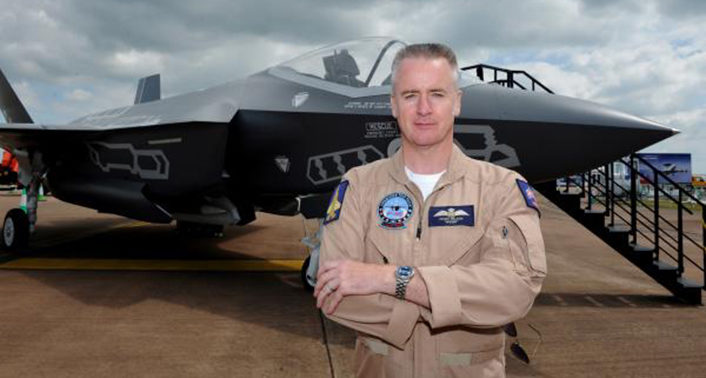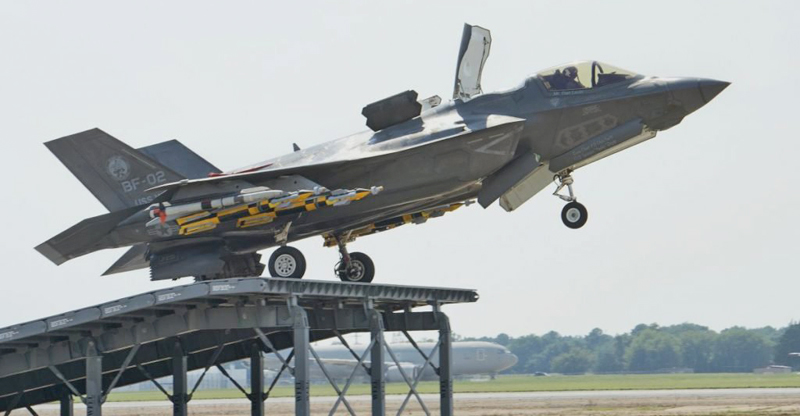Check Out This Cool New Video of F-35B Doing Ski Jump Launch Trials for the QE2.
British Aerospace test pilot Peter “Wizzer” Wilson demonstrated the F-35B Lightning II’s capability to launch from a ski-jump style launch ramp during phase 2 testing with a heavy external weapons load last week in a series of capability flights at Naval Air Station Patuxent River, Maryland.
The Lockheed Martin F-35B Lightning II STOVL (Short Take Off Vertical) variant was configured in a “third day of war” load-out with heavy external Paveway precision guided bombs and AIM-132 ASRAAM air-to-air missiles in addition to any internal load and the aircraft’s GAU-22A 25mm internal cannon.
The external weapons configuration demonstration (as the one done by the F-35C firing a missile while inverted) is interesting since it includes the broad capability of the F-35B across the entire tactical conflict spectrum. With a “first day of war” configuration the F-35B would likely carry weapons internally to maintain low radar cross-section and observability from sensors. However, as a conflict evolves and enemy air defense assets including sensors, air defense missile and gun systems and enemy aircraft, are degraded by airstrikes from F-35s in the low-observable configuration the environment becomes more permissive. The F-35 no longer relies on low-observable capability for survivability. It can shift to carrying large external loads to accelerate the prosecution of ground targets in an effort to overwhelm an adversary with highly effective precision strikes.
Moreover, as already explained in previous posts on this subject, LO aircraft in un-stealthy configuration because of the external loads achieve stealthiness and can play a different role once their external weapons have been expended.
The F-35B in this series of launch tests is in the “third day of war” external load configuration.
The demonstration highlights the compatibility of the aircraft with the new Queen Elizabeth class of aircraft carriers including the recently commissioned HMS Queen Elizabeth II (RO8) and the upcoming HMS Prince of Wales (RO9) to be commissioned in 2020. Both new carriers use the traditional ski-jump launch ramp as employed on legacy Royal Navy ships and also by the Chinese, Russian and upcoming Indian navy carriers. These aircraft carriers do not yet have, or need, launch catapults.

The tests were conducted the week of August 14, 2017 in anticipation of upcoming trials on the HMS Queen Elizabeth II. BAE Systems ski jump project lead test pilot Peter Wilson, a former Royal Navy and Royal Air Force pilot now living in the U.S. during the flight test program, told writer George Allison for the media outlet U.K. Defence Journal that:
“Friday’s F-35B ski jump was a great success for the joint ski jump team. I’m exceptionally proud of this team. Their years of planning, collaboration and training have culminated in a fantastic achievement that advances the future capabilities of the aircraft and its integration into UK operations.”









